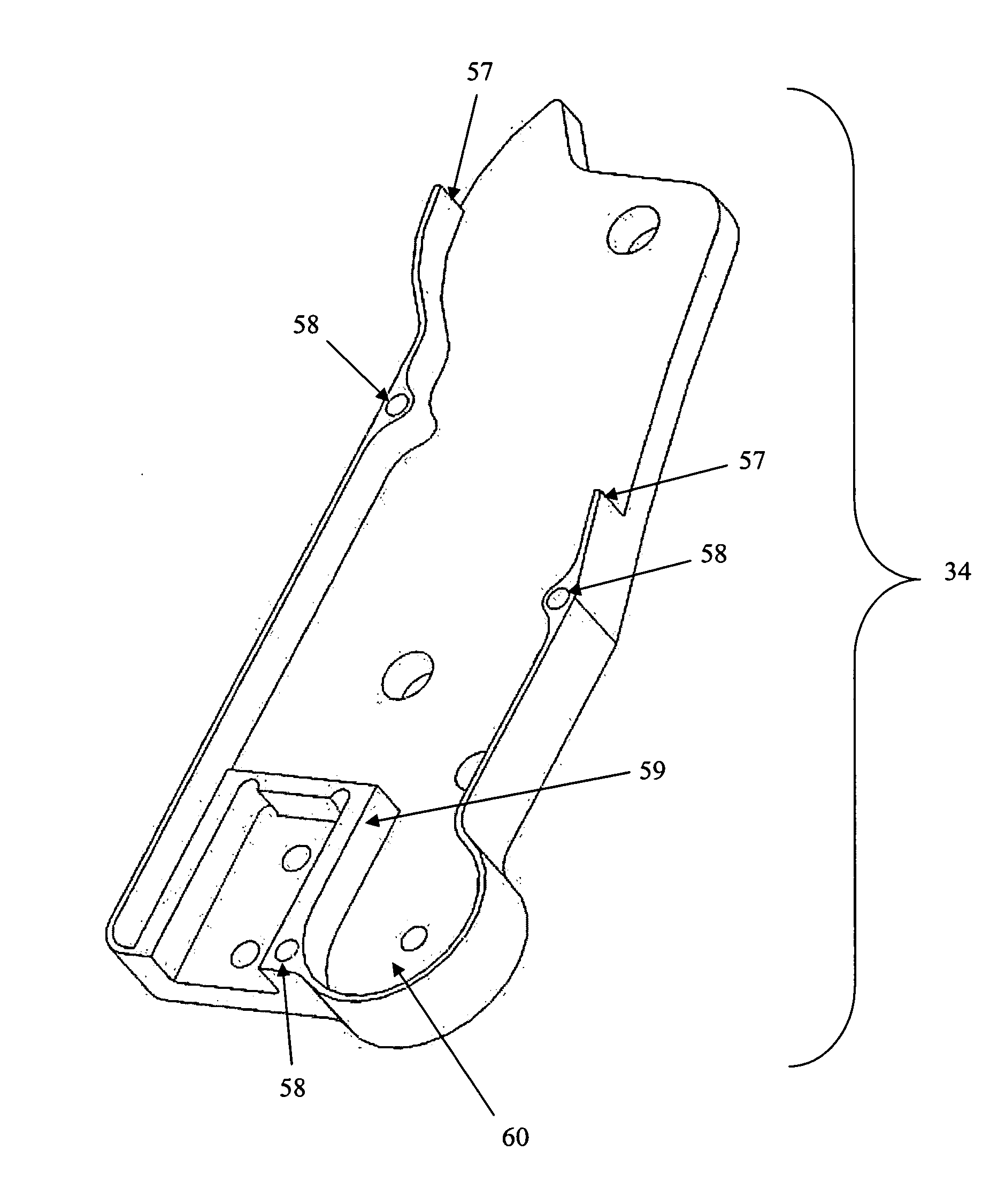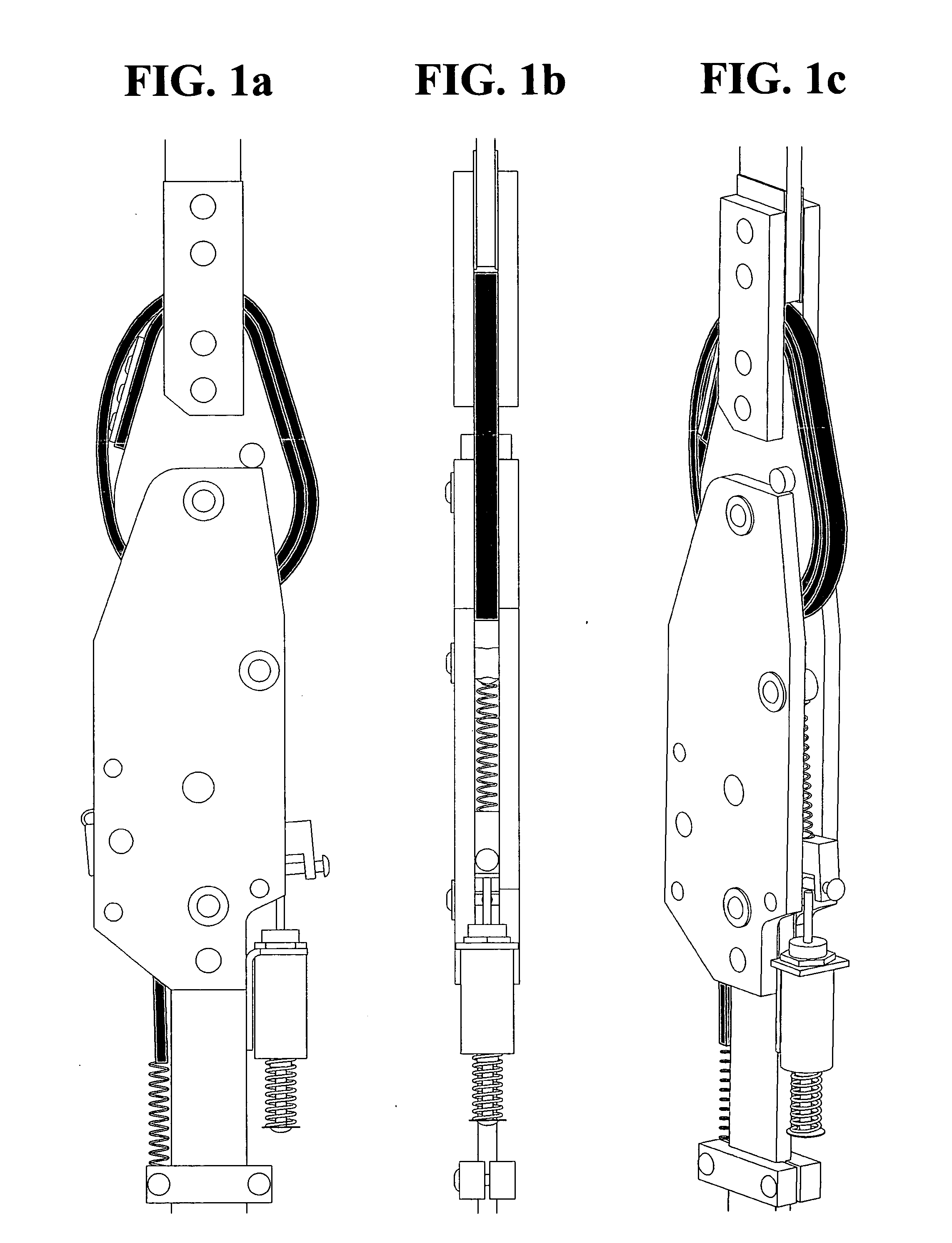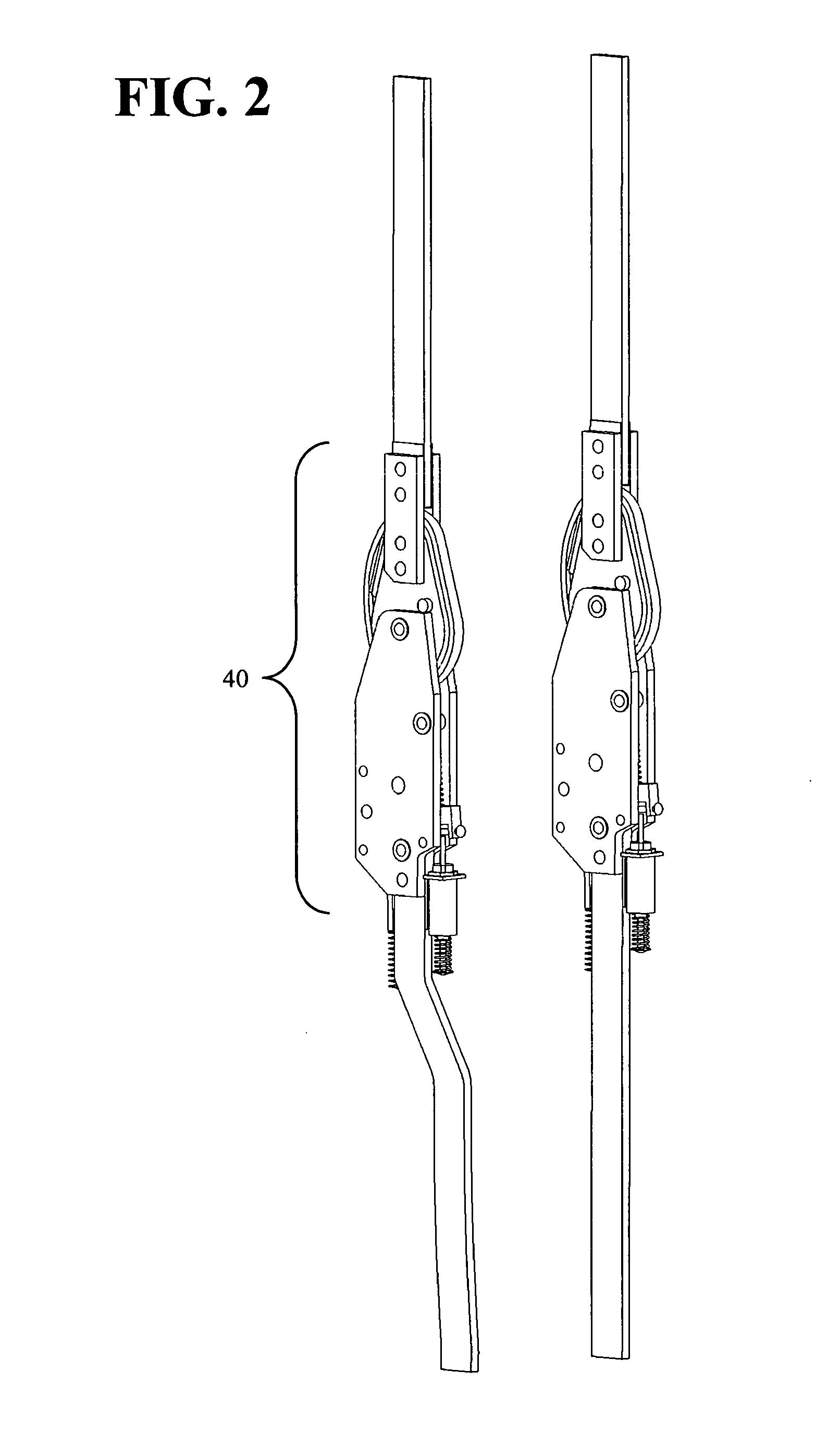People inflicted with isolated quadriceps (
thigh muscle)
weakness or partial or total
paralysis of the quadriceps (knee extensors) often lack the
muscle strength to walk safely without collapsing under their own weight and falling.
Unfortunately, abnormal
gait patterns must be adopted by KAFO users to overcome the inability to flex the knee when the leg swings forward during the swing phase of gait.
These abnormal gait patterns can lead to chronic injuries,
excessive energy expenditure and cosmetic implications.
Walking with a fully locked knee also limits the user's mobility and prevents them from safely and efficiently walking on inclines,
stairs and uneven surfaces.
While commercial SCKAFOs do promote a more natural gait to some extent, they suffer from functional and structural limitations.
Current SCKAFOs either require the knee to be fully extended to engage the knee-
joint lock ([4, 1920] and therefore would not support the limb in stumbling with a partially flexed leg), require specific unnatural
ankle angles to engage the knee-
joint lock [19, 2] do not allow
knee extension when locked to
resist flexion during stance (preventing stair / ramp climbing), or are too heavy and bulky for many potential clients and are thus energy exhaustive, obstructive, intimidating or unattractive.
Brace-users wearing these orthoses are not permitted natural leg motion and are, therefore, limited in where they can walk; are not given sufficient support in case of stumbling; or have
excessive energy expenditure and thus early fatigue
during ambulation due to the heavy and cumbersome design.
The bulkiness of these orthoses also tends to discourage their use for cosmetic reasons.
The roller
clutch joint could therefore provide uninhibited movement during swing and unidirectional motion during stance.
Unfortunately, the joint had an excessively thick profile and the rollers were prone to jamming into the wedges and required an impractically high disengagement force that tended to deform the cage.
It was found that an excessive amount of force was needed to retract the wedge from the joint space.
The wedge also experienced significant plastic deformation due to the high, localized loads endured while preventing flexion.
However, the joint was considered expensive to manufacture, the joint sliding action was found to be too rough, and the ring was subject to scoring under medium loads.
The design is impractical, as it requires the patient to make specific
ankle movements during the
gait cycle to engage the knee lock.
A locking knee brace, which relies on ankle motions to engage and disengage the
locking mechanism, cannot be used by people with fused, deformed or spastic ankles, and would not be suitable for stumbling.
Dynamic knee joints, which rely on the concept of impingement, are often prone to jamming, and require large disengagement forces to unlock the knee if any external knee moment is present [3].
This requirement would not provide security when
climbing stairs or walking on uneven ground.
The application of weight to the
knee joint at
heel strike thrust the lower portion of the orthosis toward the upper portion, ramming the serrated
brake plates into the bevelled shoe thus jamming the shoe between the sandwiching plates.
Disadvantages of this design include the
knee joint's inability to allow extension during stance, potential jamming issues and wear of the bevelled shoe and
brake plates from repeated use.
Weighing well over 3.7 kg (8.2 lbs), the IB-II is too heavy for practical application.
In order to achieve this, it was not possible to have the orthosis uprights follow the curvature of the limb and large spacers had to be used to anchor the orthosis upright to the AFO component.
This made the device bulky medial-laterally.
Though the electromechanical knee joint
system proved to be quite effective, the device's excessive profile and bulk limits the practicality of the orthosis.
Flexion of the knee in this state would cause the rollers to roll into the tapered end of the pockets, and jam them between the conical inner surface of the lower housing and the walls of the tapered pockets.
Despite its apparent utility, the cost of
machining the conical roller
clutch device was too high for practical application.
Furthermore, in order to withstand the stresses applied to the joint, the roller
clutch would be excessively large and heavy.
Though they have made it into the commercial market, these locking knee joints do not fully satisfy the size, weight, cost, function and cosmetic requirements of individuals that use these devices.
The brace therefore provides no support to users if their knee is flexed when the leg is loaded, a common event in walking
stairs, inclines, uneven ground or in stumbling and relaxed standing.
This SCKAFO therefore does not practically serve many potential SCKAFO users that may be too weak to fully extend their leg while walking.
The disengagement mechanism requires 10% dorsiflexion; therefore it cannot be used by patients with fused, deformed and spastic ankles.
In addition, the delicate tubular steel structure may be unappealing to clients who feel they need more support [9].
Knee extension will, however, cause the
cam to be pushed away from the friction ring, and continue unimpeded.
The orthosis as a whole is somewhat bulky [12] and the joints themselves are relatively large and heavy by KAFO standards.
While Horton's Stance Control Orthosis does have the ability to lock at any knee angle, its weight and bulk are not well tolerated by many individuals using the device.
Objects such as clothing, or debris when walking outdoors, can become lodged between the foot and the
stirrup.
The bulky
thermoplastic foot shell may prevent the
client from donning a shoe, and the free-ankle option cannot be used by people with fused, deformed or spastic ankles.
This requirement limits where the patient can walk and provides no support if the patient stumbles in mid-step.
Ratchet devices suffer from two inherent disadvantages including
noise and a limited number of locking positions.
The joint will therefore generate an unnatural
ratchet sound whenever the user extends their knee in stance.
If an orthosis looks or sounds unnatural, the device will draw unwanted attention to the user and the orthosis will not be used.
Users that require the confidence of a rapid engaging knee lock will not tolerate this lack of support.
The 9001 E-Knee's biggest drawback is its size, weight and cost.
Measuring over 2 cm thick, the 9001 E-Knee has a large profile that can be obtrusive and severely affect the orthosis' cosmetic appeal.
The 9001 E-Knee is the most expensive of all SCKAFO joints, costing nearly double the price of other commercial SCKAFO joints.
The Free Walk / UTX [19] and Swing Phase Lock offer limited functionality as they both require the knee to be fully extended before they can provide support in stance.
This is an unrealistic and potentially hazardous requirement as the user may load their leg with a flexed knee when
climbing stairs, walking inclines or uneven surfaces, during relaxed standing or reacting to a stumble.
Many KAFO users do not have the
muscle strength required to fully extend their knee consistently during walking.
The key disadvantages of the Horton Stance Control Orthosis and 9001 E-Knee are their
excessive weight and bulk.
A major reason among clients for abandoning the use of long
leg braces is that the assist device is too bulky and unpleasant for
frequent use [16].
An excessive profile can cause the lateral (outer) knee joint to collide with passing objects and the inner medial joint to rub against the opposite knee.
If the user is wearing a brace on both legs, the inner knee joints could collide during walking.
The excessive physical size and weight of the Stance Control Orthosis and the 9001 E-Knee make them too obtrusive and heavy for many users to tolerate.
Cosmetics are an extremely important issue for KAFO users.
If an orthosis looks unnatural, sounds unnatural, or forces the user to move in an unnatural manner, the orthosis may not be used, regardless of how well it functions.
The excessive profiles of both the Stance Control Orthosis and 9001 E-Knee create a very bulky look even underneath clothing.
The
thermoplastic stirrup integrated into the foot piece of the Stance Control Orthosis adds further bulkiness to the braced leg.
For most clients, walking with a brace that generates clicking sounds is unacceptable.
 Login to View More
Login to View More  Login to View More
Login to View More 


